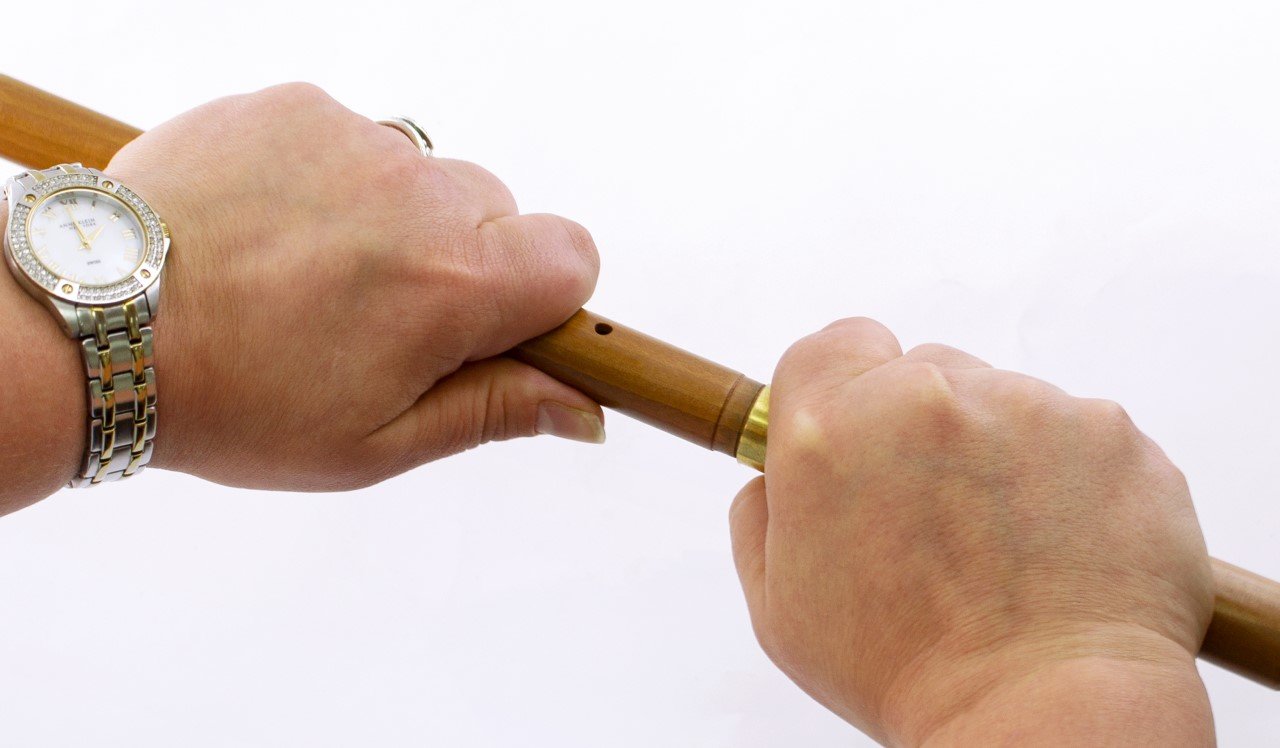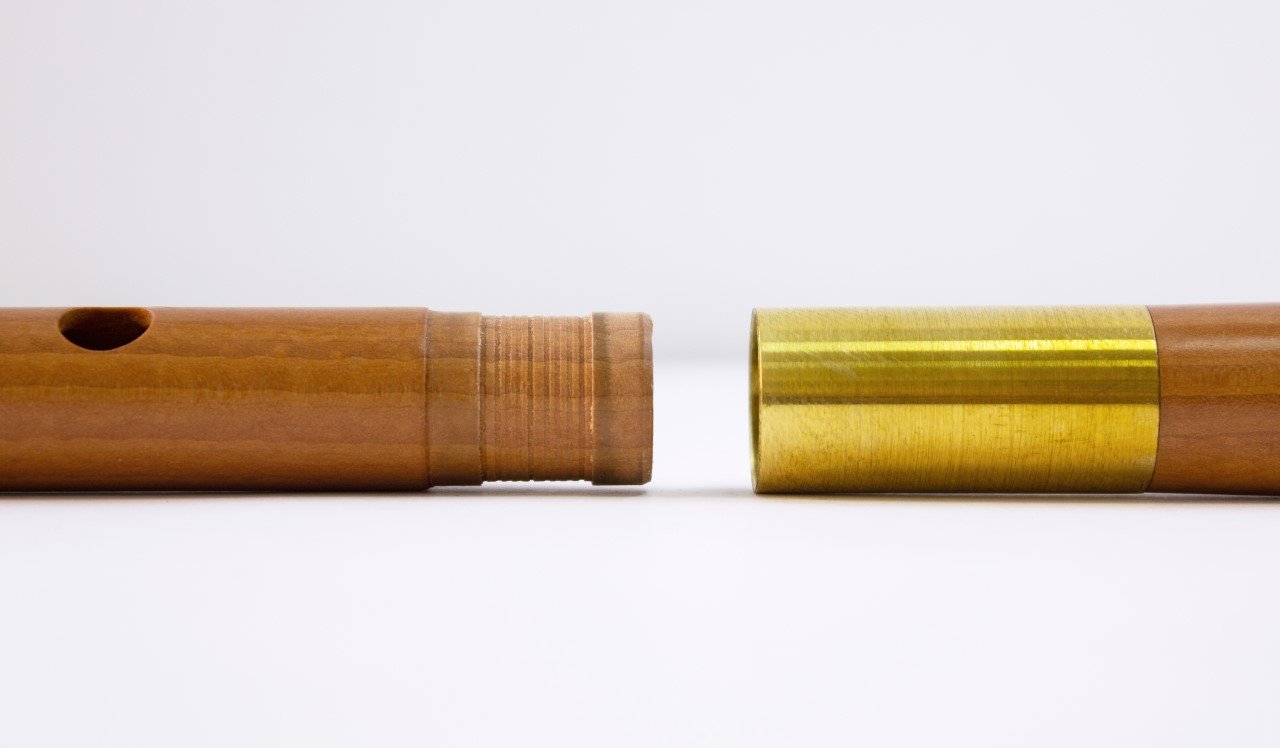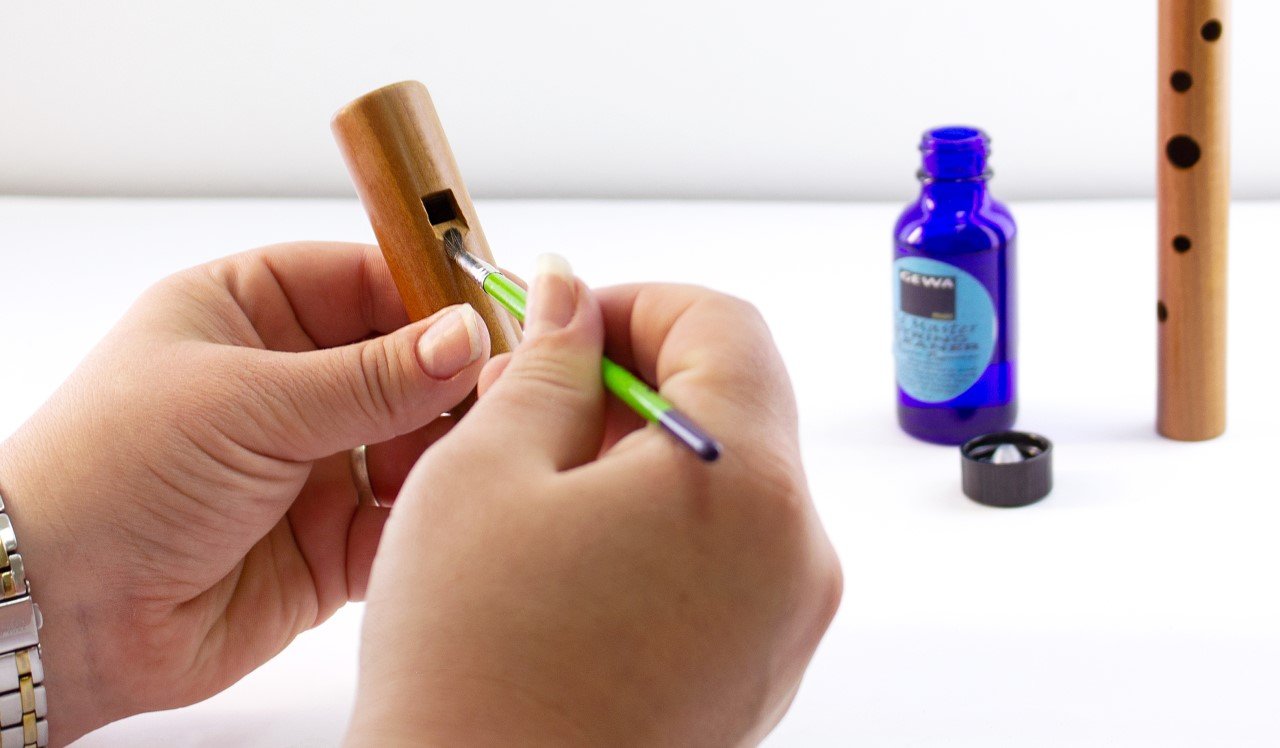Tool Care
The recorder made of wood must be lubricated with special oil from time to time to protect the instrument from excessive moisture. If this is not done, the wood will deteriorate, the inner groove of the instrument will become rough, and the instrument may crack. It is important that the tool is dry and clean before lubrication.
Step 1. If the instrument is collapsible, untwist it.


- The flute head (see the diagram of the instrument structure) requires special care: hold the top of the instrument with the suction channel facing up, so that the oil does not get into the block*. Next, we pass a piece of cloth through a special hole in the cleaning stick, and with its help we rub the oil along the inner channel of the instrument head.

- Labium. The labium is lubricated with a small brush (or a regular paint brush). The side walls of the window on tenor and alto scale instruments can also be carefully lubricated with oil, but on soprano and sopranino instruments this should not be done in order to avoid oil getting into the intake channel.

Step 2. Let the oil work! Leave the instrument to rest for 24 hours. For this, the head of the instrumnet must be in a vertical position to avoid oil draining to the block.

Step 3. Wipe excess oil from the surface of the instrument. This step cannot be left aside, because the remaining oil after drying forms a film, which is very difficult to remove later.
- Oil is necessary to prevent excessive absorption of moisture by the instrument. When lubricated with it, a thin film is formed, which protects the internal channel from this. However, the plug, or the block, which is located in the head of the instrument, does not need such protection, and therefore getting oil on this part can only harm.

Does the instrument need to be lubricated?
To lubricate the instrument with oil – or not, which oil to use for this – questions that often cause debate among owners and makers of wooden longitudinal flutes. In order to understand what will be better for your instrument, you need to clearly know its structure and respond to the needs of the instrument while playing it.
Instruments that are made of wood are usually not painted or varnished on the surfaces that come into contact with moisture during playing (inner channel, block, top of the block). The surface of a new (quality-made) instrument is always smooth, water-repellent, because the fine pores of the wood are tightly closed by the natural fat content or by treating the wood with oil or paraffin wax. However, after a certain period of using the instrument, the water-repellent substances disappear – the surface becomes rough, and it is then that the instrument needs to be lubricated.
How often? The amount of oiling required for each individual instrument is different because each is made from a different wood – softer hardwoods need oiling more often, harder ones less often. However, it is best to observe and monitor the instrument, and at the first signs of drying out, lubricate
it. Usually twice a year is enough.
What parts need to be lubricated?
Basically, all parts of the flute are lubricated with oil, with the exception of the block and the blowing channel. This is explained by the fact that the oil forms a kind of film that makes the surface water-repellent – that is, water is not absorbed by the wood, but collects in small droplets. This is good for all parts of the flute – except the block and the mouthpiece – the presence of even the smallest drops of water in the mouthpiece will lead to a hissing or wheezing sound. Therefore, the block should contain as little fat as possible. For this, the so-called anti-condensation is used – a liquid that removes the remains of fat in wood and prevents the formation of water on its surface.


